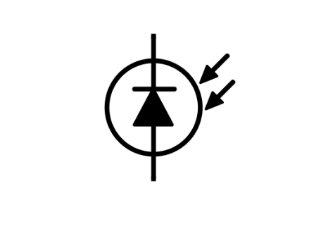
In today's rapidly evolving electronics industry, photodiodes have become a focal point as critical components. This article delves into the definition, working principles, characteristics, and advantages of photodiodes.
Catalog
III. Characteristics and Advantages
I. What are Photodiodes?
Photodiodes are semiconductor devices that convert light into electrical current. Current generation occurs when photons are absorbed in the photodiode. Photodiodes may incorporate optical filters and built-in lenses. As the surface area of photodiodes increases, their response time typically slows down.
Photodiodes resemble conventional semiconductor diodes, with the key distinction that they can be directly exposed to light sources or encapsulated through transparent windows or optical fibers to allow light to reach the device's photosensitive area for signal detection. Many photodiodes designed for use incorporate a PIN junction rather than the typical PN junction to enhance the device's response speed. Photodiodes are often designed to operate in reverse bias.
II. Working Principles
Photodiodes feature a P-N junction with an intrinsic layer between the P (positive) and N (negative) layers, generating a voltage when light strikes the junction (active P-N junction). Excited photons striking the photodiode create electron-hole pairs, known as the inner photoelectric effect. Electrons then diffuse into the P-N junction to generate an electric field. The total current through the photodiode comprises the dark current (current passed in the absence of light) and the photocurrent, necessitating the minimization of dark current to maximize device sensitivity.

△ Symbol of Photodiode
III. Characteristics and Advantages
Photodiodes possess several unique characteristics and advantages:
· High Sensitivity: Photodiodes exhibit rapid response times and high sensitivity, swiftly and accurately converting light signals into electrical signals.
· Fast Response: Photodiodes swiftly respond to changes in light signals, suitable for high-speed optical communication and light measurement applications.
· Stability: Photodiodes maintain stable performance across various environmental conditions, unaffected by external disturbances.
· Wide Wavelength Range: Photodiodes' sensitivity spans a broad wavelength range, suitable for detecting light signals of different wavelengths.
IV. Applications
PN junction photodiodes, like other types of photodetectors, find wide application in devices such as photoresistors, optocouplers, and photomultiplier tubes:
· Optical Communication: Used in optical fiber communication systems as light receivers and transmitters. Receivers convert light signals into electrical signals for demodulation and processing, while transmitters convert electrical signals into light signals for transmission through optical fibers.
· Light Measurement: Employed in precise measurement fields like spectroscopy and optical power meters. For instance, in spectroscopy, photodiodes swiftly and accurately detect light signals of different wavelengths for analyzing material composition and properties.
· Light Detection: Utilized in fields like security surveillance, autonomous driving, and machine vision for light signal detection. For instance, in security surveillance systems, photodiodes can detect intruder activity or changes in illumination, triggering alarms or recording functions.
· Medical Devices: Widely used in various medical instruments for sample analysis, detectors for computed tomography, and blood gas monitors.
· Industrial Automation: In industrial production lines, photodiodes are often used for precise light intensity measurements due to their superior linearity compared to other optoelectronic materials.
V. Conclusion
As vital members of the electronic component industry, photodiodes play crucial roles. Their high sensitivity, rapid response, and stability make them widely applicable across various scenarios. With ongoing technological advancements, photodiodes will continue to play pivotal roles in driving the development of the electronics industry.




